Our relationship with plastic has altered noticeably in recent years. There’s been a growing recognition that we cannot continue to rely upon single-use plastic, which forms islands of staggering size in the middle of oceans, infiltrating the digestive systems of marine life – and, it’s now strongly believed, our own.
This has culminated most recently with the dire warnings about the increasingly irreversible environmental impact of humanity upon the Earth.
Something has to be done.
But by who? Who has the power to renegotiate our ever more strained ties with a material that we rely upon in practically every part of our lives?
Practising what I preach: eco travel
A few months ago, Better Places Travel set me a challenge: to avoid using any single-use plastic on my next international trip. I’ve long had a portable water filter so have dispensed with bottled water and have been testing out more sustainable toiletries that don’t use plastic packaging.
How hard could it be fully practise what I preach and adopt green and eco travel principles for a ten-day trip to Guatemala?

Well, the experience certainly had its challenges.
It’s only when you start to analyse the use of single-use plastic in your daily life and how much of that is actually beyond your control, that you realise how large the obstacle that you face really is.
But I persisted and I learned a lot along the way and the experience of pursuing a more sustainable, green travel style has had repercussions for my lifestyle back home.
Here are seven things I learned, plus an overview of everything I now carry as part of my plastic-free travel kit.
Planning Your Trip to Patagonia?
Save time, stress & money with a customized travel itinerary planned for you by a Patagonia expert
1. Invest in a lightweight, portable water filter before you leave
One of the biggest hurdles of avoiding single-use plastic is safe, clean drinking water. So many travellers opt to buy plastic bottles on trips abroad – even to parts of Western Europe where the tap water is free of most viruses and illness-causing bacteria – because they’re worried that they’ll get sick.
Unfortunately, this is probably the most polluting feature of travel: Lonely Planet argues that 30 million plastic bottles wind up in landfill every day. But there is an easy solution: a portable water filter.
I’ve long been travelling with a Steripen (you can find out why the Steripen Adventurer is my favourite water steriliser) and Better Places Travel also sent me a Grayl for use during my trip to Guatemala.
Introducing a water filter into your daily travel routine is crucial to adopting a plastic-free and environmentally-friendly lifestyle – and it’s also exceptionally wallet friendly, too.
Remember, if you’re spending a couple of dollars a day on buying bottled water, it quickly adds up.
Depending on the type of filter you have, you may need to plan ahead to be sure you’ve got plenty of water for the day. With the Steripen, I tend to sterilise a one-litre Nalgene bottle of water at the start of the day and take it with me in case I need to do some more on the go.
With the Grayl, because it only takes 400 millilitres of water at a time, I would use it to filter water and then decant it into my Nalgene so that I would have enough to last me for the day.
Either way, given that both should be able to get you clean, safe drinking water in a matter of minutes – whether it’s from a public bathroom or a stream in the mountains – it means you should never be stuck without something to drink, nor faced with the prospect of getting ill.
I’ve tested out a lot of water filters during my travels, so I suggest you read this article about the best water purifiers and filters for travel to find out why I really don’t recommend the Lifestraw Go among other products!
2. You’ll want a plastic-free eating kit, too
Almost as important as planning ahead for clean drinking water is bringing the correct tools for eating on the go.
When I was in Guatemala, I refused to eat anything that came in metallic, plastic packaging (I’m looking at you crisps, biscuits and other snacks) and when you’re grabbing some street food or getting a quick take-out dish when you’re abroad, it can often come in Styrofoam and with plastic cutlery.
What’s more, when you buy a drink in a cafe or on the street, more often than not, you get a straw with it.
All of these forms of plastic are avoidable: I bought myself a set of metal cutlery, that included a knife, fork, spoon and straw and which I carried around in my rucksack ready for any opportunity where it was required.
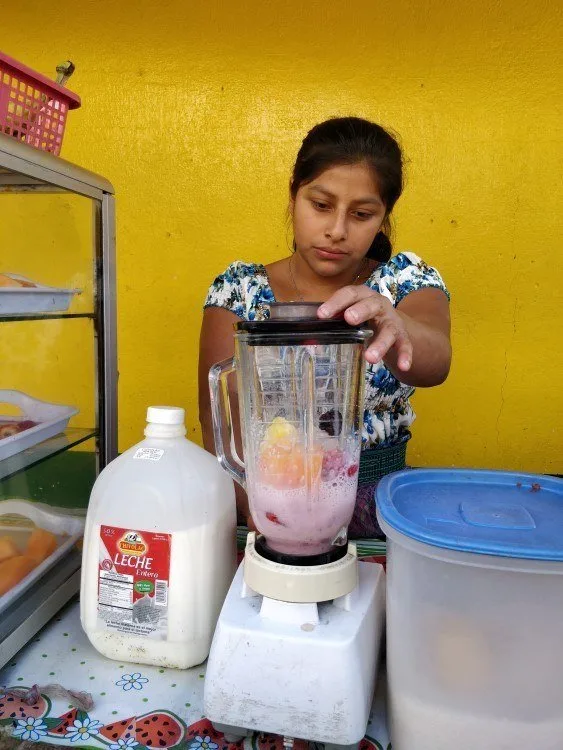
I also brought with me a plastic Tupperware container that I could use if I bought street food or needed to take sandwiches out for the day, rather than relying on plastic bags or clingfilm.
Add into the mix was a bamboo mug that can work for any hot liquids and it was easier than I’d thought to stay away from single-use plastic when I was buying food or drink off the street.
3. It’s probably easier to follow eco travel principles in lower-income countries than in higher-income countries
What I’ve realised after four years living in South America (and another 26 in the UK), is that single-use plastic can feel like such an ingrained feature of life in many parts of our daily lives – but there are actually many places where single-use plastic isn’t as pervasive.
In the UK, we have a weekly recycling collection for plastic, tin, paper and card; we have a compost heap in the back garden for leftovers.
The only things we throw away into our fortnightly rubbish bin is the non-recyclable, single-use plastic that is used to wrap the fruit and vegetables that we buy from the supermarket.
This does, to be fair, go a long way towards maintaining the shelf-life of the items so that they don’t rot immediately when you get them home, however, it’s a real barrier to going single-use plastic free.
However, in lower-income countries, there’s a food revolution going on – well, one that has been for millennia.
They’re called markets.
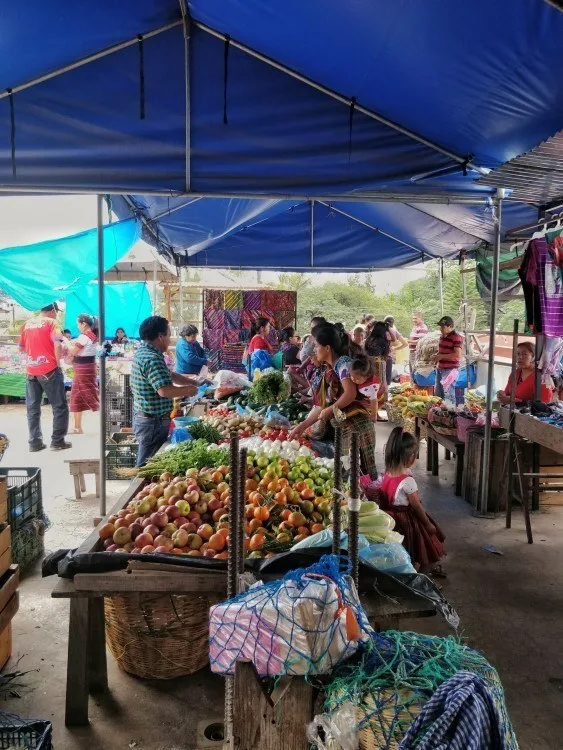
What I saw in Guatemala and have encountered across South America are local markets filled with local producers selling locally-grown fruit, vegetables and meat – all of which (except perhaps the meat!) is fresh, fresh and fresh.
There’s no need for plastic bags: instead, you can just turn up with a tote bag or a pack-away rucksack and listo: pack it full of your produce and you’re 100% plastic free.
What’s more, you can often find dried goods such as pasta, rice, nuts and fruit available to buy per the kilo. Again, you’ll want some reusable grocery bags (these mesh bags are a great option) for each item, but it’s better than buying dried goods in plastic packaging at the supermarket – and can also be better for travellers who don’t actually need to buy a full kilo at a time.
Of course, it helps that many of these countries still grow a lot of their own produce and don’t have to rely on food being transported half the way around the world (which is a real issue in the UK and a completely different article to be written).
But still, when you’re travelling, the most eco-friendly decision you can make when it comes to food is to become a regular user of local markets. It’s also a sustainable contribution to the local economy.
4. Airlines are the worst when it comes to single-use plastic
It wasn’t until I agreed to the challenge and got on my first plane that I was confronted with the biggest barrier to going single-use plastic-free when you travel: aeroplanes.
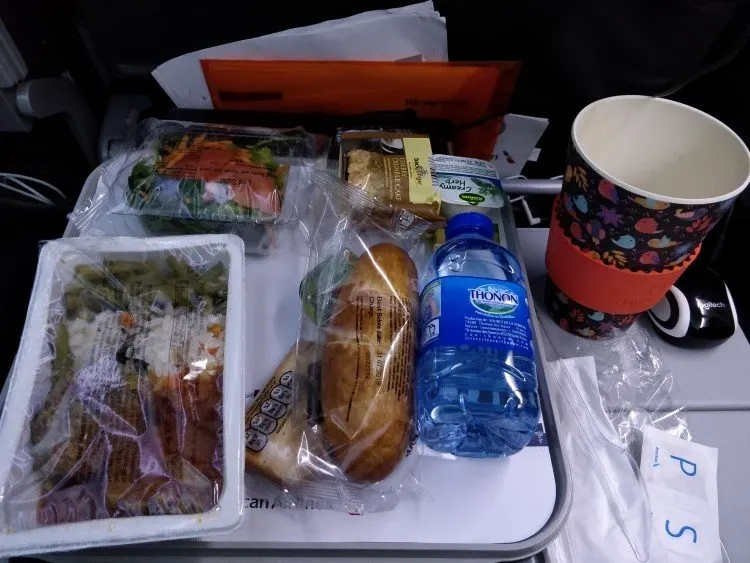
My first meal aboard my American Airlines flight across the Atlantic was the stuff of which eco travel nightmares are made. Everything from the bread roll down to the side salad and even the main dish came in plastic containers covered with even more, flimsier plastic.
I counted over a dozen items of plastic, including the cutlery and plastic bag it came in, and the salad dressing.
I duly got my metal cutlery set out of my bag (sans knife – they don’t let you through security with that in your hand luggage!) and used my bamboo mug for drinks during the meal service. And I fumed.
Interestingly, on the flight back, I noticed that those in Premium Economy are given metal cutlery – so if you’re travelling without cutlery, it’s worth enquiring whether they have some to hand.
What’s worse is that when the stewards returned to collect the rubbish, it all went into one bag. According to the International Air Transport Association (IATA), we each generate 1.4 kg of waste per flight.
And with two million passengers flying daily, the amount of rubbish – driven by a whole lot of single-use plastic – is sickening.
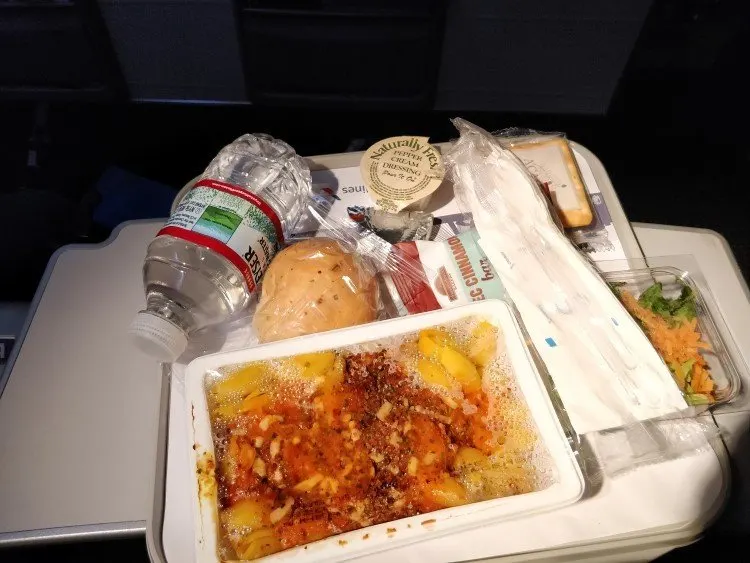
Add into the fact that, due to bio laws centred on preventing the transmission of animal diseases between countries, most waste produced on international flights is incinerated, including cans and glass bottles that could easily be recycled.
Luckily, as this article indicates, there are some airlines leading the fore when it comes to being environmentally-friendly (unfortunately few of which actually fly to many destinations in South America).
And the main conclusion that they draw as to how we, as consumers, can respond to this issue is the same one I reached: we need to be proactive in complaining to the airline.
Regulation is difficult, complex and the Earth will have likely reached environmental Armageddon before change is effected by the industry itself, so instead, it’s down to us to complain about what we experience and put our money where our mouth is when it comes to which companies we choose to fly with in the future.
5. Support places that are working towards a single-use plastic free future
What came as one of the biggest positive surprises during my time in Guatemala was how committed so many companies and organisations that I met on the ground are to the causes of eco travel and living plastic-free.
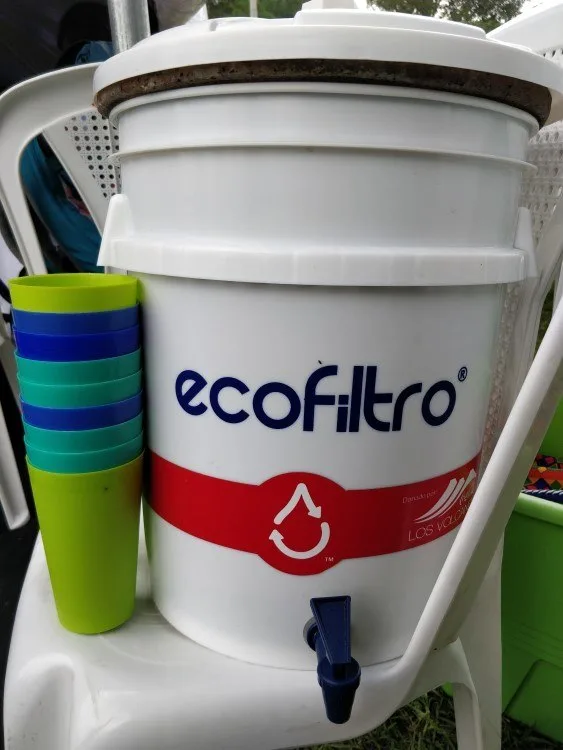
In Antigua Guatemala, we lunched in Asian restaurant Bambú, where metal straws were on sale and in use, while, throughout the city, EcoFiltro water filters are available for filling up your bottle (although, admittedly, these filters aren’t as reliable as those such as the Steripen or Grayl but I drank the water and didn’t get sick).
There’s even a hobbit-inspired eco-hotel, Hobbitenango, which is run 100% on solar and wind energy, complete with a sustainable restaurant that sources as many products as possible from organic, local producers.
During my trip, we also visited sustainable community-led tourism projects around Lake Atitlan. This included the town of San Pedro La Laguna, which had been quite literally drowning beneath single-use plastic, much of which was brought into the town by tourists. Following a controversial new municipal government initiative, they have since banned all single-use plastic.
Now, you’ll find the local ladies doing their shopping at the market with rubber baskets that were gifted by the municipality to replace plastic bags, while food comes wrapped in leaves rather than plastic.
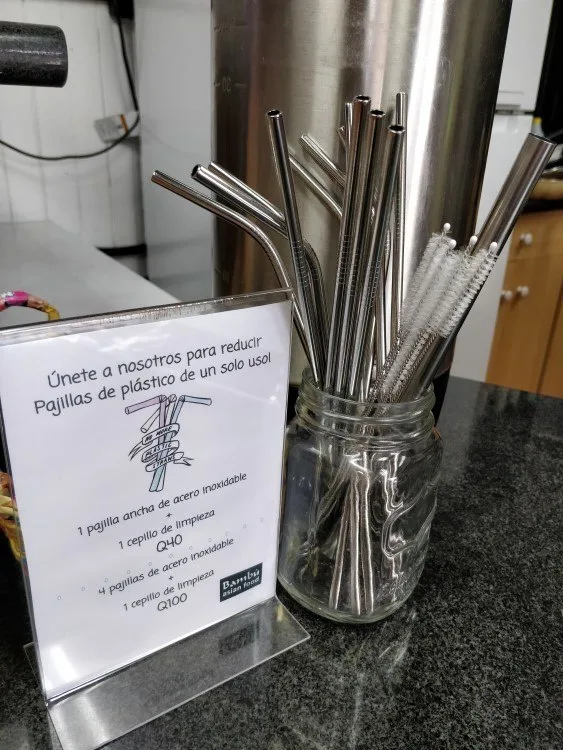
Regardless of whether you visit this town in Guatemala, you can support this hard-fought success around the world by making sure that you don’t bring in or buy anything that uses single-use plastic when you travel to rural destinations.
As I saw in Guatemala, single-use plastic is both a tangible environmental problem and a huge difficult faced by small, remote communities that cannot deal with plastic and other non-recyclable waste. As a result, the less you can bring with you, the better.
6. We’re not completely there yet for going fully plastic-free
Although I tried my hardest to avoid single-use plastic, there are some areas where this is impossible.
For starters, I wear daily disposable contact lenses. I’ve tried wearing monthlies – which are better for the environment – however, with dry eyes, they’re uncomfortable and dailies are just so much better for me personally.
Unfortunately, contact lenses aren’t yet widely recycled, however I have found that in the US, Bausch and Lomb have a programme whereby you can post used lenses to be recycled, while in the UK, a handful of Specsavers Opticians also recycle used lenses: you can drop them off in their Bristol store or post them to Worcester, Maidstone and Syston.
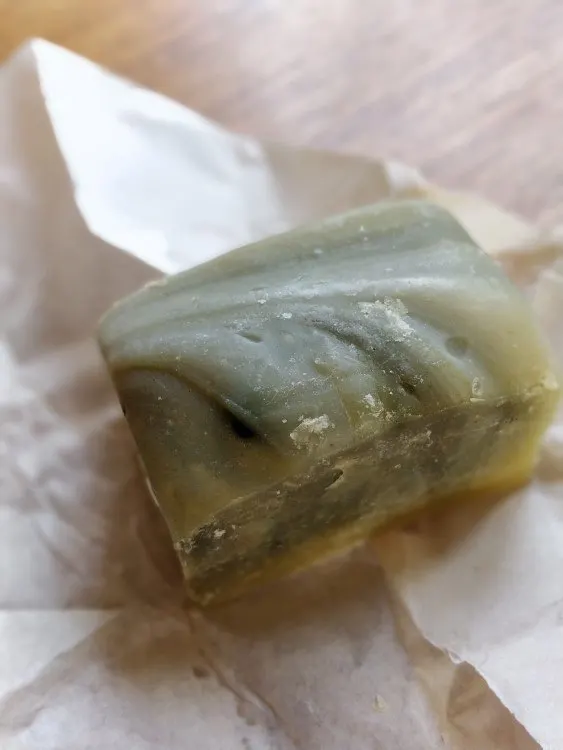
Although I’ve enthusiastically accepted a bamboo toothbrush, toothpaste tablets and hard conditioner into my daily routine, I’ve also tried – and failed – with multiple hard shampoos (with the idea being that they don’t come in plastic packaging). I’ve sampled several from Lush and others from a soap company based here in the UK and have found that they either make my scalp itchy or leave my hair feeling greasy and not fully rinsed.
I would still recommend that if you’re aiming to go green when you travel, that you try them out as it’s definitely something that works better for some people’s hair than others.
I’m still going to try my best and see if there’s an alternative out them, but for the time being, I’m focusing on buying shampoo in the biggest bottle possible so as to at least minimise my impact slightly.
7. Going single-use plastic free is as much as a lifestyle as for travel
While the challenge started as one for travel, I’ve realised that a plastic free life is so much more than just sustainable, green travel.
And, unfortunately, while I fully agree with this article arguing that conscious consumerism will not change or save the world, I do think that if enough of us do alter our consumer habits, we can send a powerful message to companies – and help to alter their behaviour, too.
(That said, I do genuinely recommend you read Alden’s article as it highlights other tangible choices that you can make to really focus our efforts on saving the planet).
In summary, the following are key strategies that you can adopt to be a more eco-friendly traveller both on your next trip and in your day-to-day life:
- Stop buying water in plastic bottles and instead carry a reusable bottle everywhere you go. (Buy a Nalgene on REI|Backcountry|Amazon)
- Use a steriliser or water filter rather than buying plastic bottles of water. (Find the Steripen on REI*|Amazon and the Grayl on REI| Backcountry|Amazon).
- Quit getting a coffee in a plastic cup and instead take your own mug.
- Carry a reusable plastic Tupperware with you and a knife, fork, spoon and straw so that you don’t need to use Styrofoam or plastic cutlery when getting lunch or other food to take out. (Buy containers on REI|Amazon, and buy cutlery on REI|Amazon)
- Always pack a cotton tote bag for when you go food shopping. (Buy on REI|Amazon)
- Invest in mesh grocery bags so that you don’t have to use plastic ones.
- Don’t use the little plastic bottles of shampoo, conditioner and soap in hotels.
- Try going #plasticfree for July as part of the Marine Conservation Society’s 2021 challenge. You can find out more here, join the challenge and read their living without plastic pdf to get even more tips on transitioning to not only an eco traveller but a plastic-free person too.
Again, none of these steps will save the world but there’s nothing wrong with leading by example.
*Since I had my Steripen Adventurer, many outdoor shops are no longer stocking it and instead have the Steripen Ultra UV Water Purifier. I would also recommend this Steripen, so I have also included links to this product.
What goes into my single-use plastic-free kit for eco, green travel
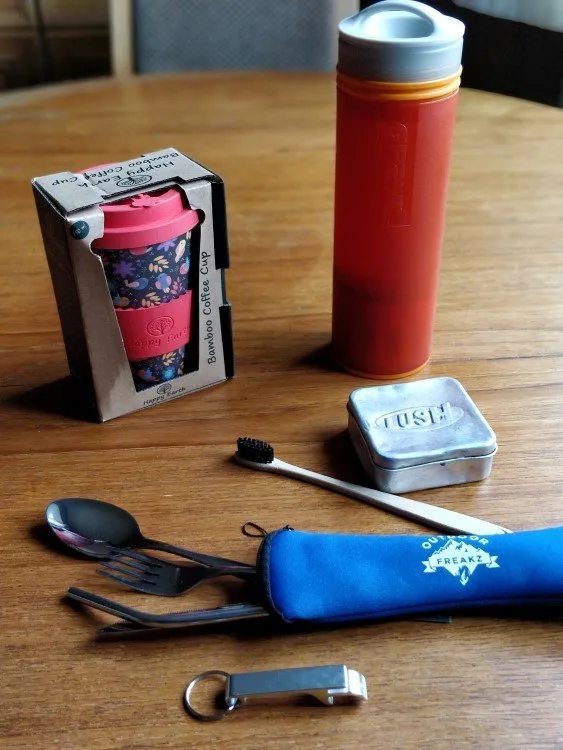
Following on from my trip to Guatemala, I’ve now got a plastic-free travel kit that comes with me on every trip.
Food and drink
A Steripen: I use the Steripen Adventurer and you can get hold of it on REI*|Amazon and you can read my in-depth review of it here. The Grayl is available on REI|Backcountry|Amazon, although I didn’t like it as much as the Steripen (find out why in this review of travel water filters).
A Nalgene plastic water bottle: The mouth is wide enough for use with the Steripen. I have the one-litre bottle. Get one on REI|Backcountry|Amazon. It’s also great as a back-up water bottle if you have the Grayl.
A bamboo coffee cup: I have this one from Amazon.
Tupperware: You can even get collapsible ones (or from Amazon).
A metal cutlery set: I looked into buying bamboo but it looks like they break easily, and so if you end up having to buy them multiple times, that definitely negates the whole point of investing in a more sustainable material. Metal is more durable, although it’s far less environmentally-friendly to produce. I have this one, but you can easily just get a storage bag for a cutlery set from home and bam, you’ve saved yourself some cash. (Buy on REI)
*Since I had my Steripen Adventurer, many outdoor shops are no longer stocking it and instead have the Steripen Ultra UV Water Purifier. I would also recommend this Steripen, so I have also included links to this product.
Toiletries
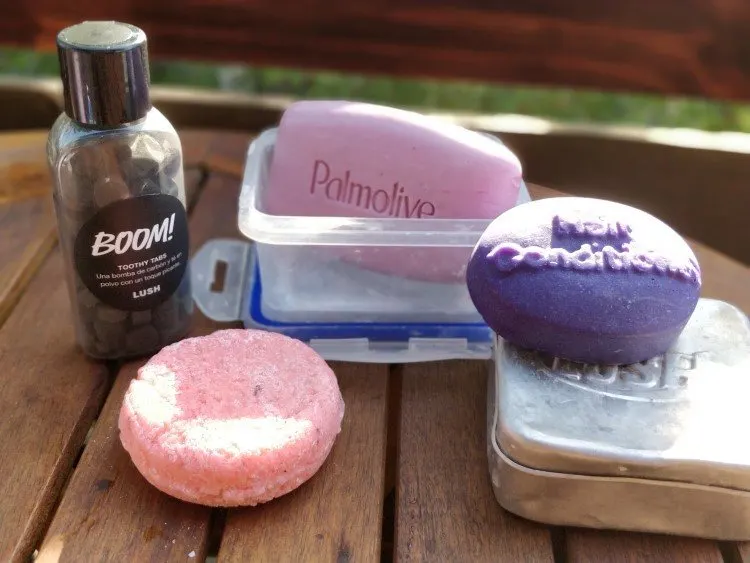
Hard conditioner, shampoo (although, as I’ve indicated, the latter is a work in progress) and soap: Lush remains the company that I’ve found to be best when it comes to conditioner, and I know a lot of people really like their hard shampoo. Ethique also has good options and there are lots of other companies to try on Etsy (and do try them – not all of them will work for your hair!).
A bamboo toothbrush: My favourite product has been from Save Some Green (unfortunately they deliver within the UK only). There are plenty on Amazon and from experience, I would recommend not getting the charcoal bristles as they tend to lose their shape very quickly and I’m not convinced they’re good for your teeth. Something like this should be better!
Toothpaste tabs: I’ve been using the Lush toothy tabs for a while (note that the charcoal ones are definitely an acquired taste!), although this one certainly looks interesting. Note that any natural toothpaste doesn’t use fluoride.
A Diva cup: I’ll admit I bought this around a year before I ended up using it (mainly because I was always away when I was on my period and didn’t want to try it out on the road). I’ve since gotten over that and can’t believe how easy they are to use and how much money it’ll save me in the long-run – just make sure you buy the correct size (there’s a different one for women who’ve had children). Seriously ladies, buy a Diva Cup! (Also available from REI) You can also get reusable pads and pants (in the UK), too.
Cotton face pads: these often use plastic but you can find alternatives on Amazon.
Shopping
A heavy-duty tote bag: try this canvas tote bag or this one on Amazon.
Reusable grocery bags: these grocery mesh bags are great for shopping at markets and help keep fruit and vegetables from going off.
This article was written in collaboration with Better Places Travel. As ever, all of the opinions on eco travel and the products that I mention in this article are my own.
Loved this article? Don’t forget to pin it!
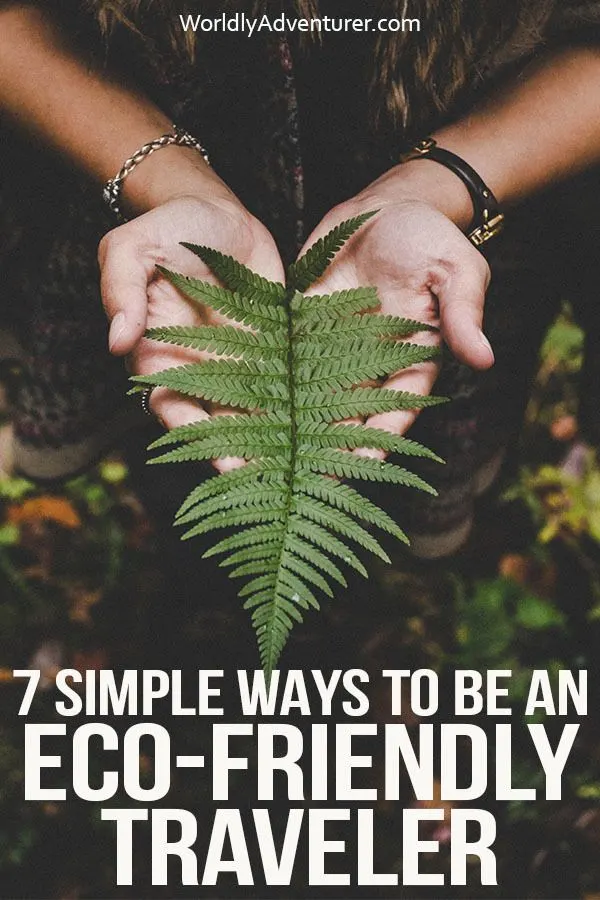

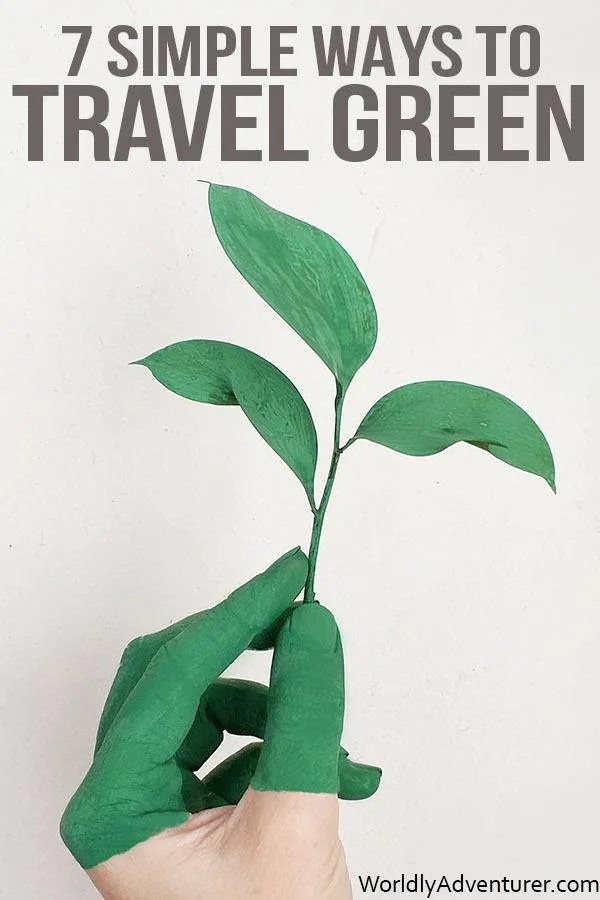
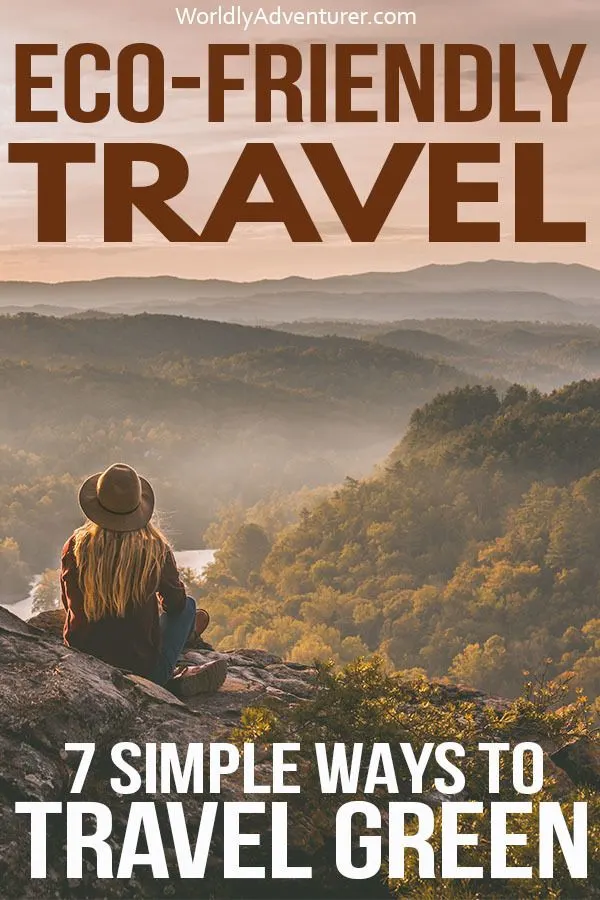
Think about your bloody carbon emissions first
Sunday 2nd of February 2020
Why the hell are you getting on a plane to begin with? Poor turtles who die from plastic but fuck the koalas who die from forest fires? You write a guide on how to travel 'eco-friendly' but include NO points about traveling locally and write NOTHING about carbon emissions.
Steph Dyson
Tuesday 25th of February 2020
Hi angry reader, I appreciate your concerns about plane travel and you can rest assured that carbon emissions are something that weigh heavily on mind. It's for this reason that I tend to spend months in South America at a time, rather than travelling on shorter trips - which admittedly is what I was doing for Guatemala, but in this case I was flying out to a conference about indigenous sustainable tourism (more on that in a second!).
As I'm sure you're aware, sustainable tourism and protecting our planet from, well frankly, ourselves, is a pretty complicated subject. Trying to protect the environment isn't as easy as just stopping everyone in the world from getting on a plane again. Are you aware that there are communities in South America (and I'll talk about this continent as that's what my blog is about, but I'm 99.9% sure that these communities exist across the world) that use tourism as a means of supporting conservation? In these, the net environmental impact of tourism could be considered positive because of the amount of carbon emissions that are absorbed by local communities protecting rainforests. You can read this article to get a sense of what I mean by this.
And have you stopped to think about the impact of tourism on the way that we treat other humans around the world? I'm a strong believer that travel, in the way it introduces us to new people, situations, cultures, challenges and everything in between is a lesson in humanity and tolerance, reminding us what we have in common with other people and also how to examine a problem from another's point of view and ultimately respect it. You can read more about this here and another interesting perspective here.
Might I go as far as suggesting to you, angry of wherever, that you might benefit from travelling more to learn how to have proper discussions with people that you disagree with, rather than leaving anonymous comments on blogs on the internet?
Steph
Martin Tvede Larsen
Tuesday 23rd of April 2019
Really nice article! Being conscious myself about how to travel and what can be done do be more eco-friendly and sustinable in our travels this article gave some good insights. My wife and I am actively using several of the things you mentioned like Lush soaps, a waterbottle with filter (Though we use a different one than you, called Lifestraw), and lots more. But we still have some way to go to reach your level it seems. Ill surely take in some of your ideas here. Were going to West Africa this summer for some months and for sure the bamboo toothbrush and maybe the lush tooth paste tablets is on our list - didnt realize they existed!
Thanks. And keep up the good work. Fully support more sustainable travels! Nice to see other travelers focused on it as well!
Steph Dyson
Saturday 27th of April 2019
Hi Martin, yes it does take a lot of planning to start being as eco-sustainable as possible but I think it all becomes second nature after a while. I have to admit that I bought the charcoal toothpaste from Lush and it's not my favourite (seems to burn my gums a little!) so maybe avoid that one and try one of the other flavours. Enjoy your trip to Africa! :)
Hannah
Tuesday 12th of March 2019
The plastic that comes with in-flight meals stresses me out! And I have also noticed that everything gets dumped in the one place, including food you haven't touched. On my last flight I tried to hand back a bread roll still in its packaging so that it could be given to someone else instead, but it just got shoved into the bin. I feel like it's an uphill battle with airlines - but I love all of your suggestions for travelling, there are some I do already but definitely others I can take up!
Steph Dyson
Monday 18th of March 2019
I completely agree with you about watching all the rubbish getting thrown into the same place and not getting sorted. I get that they are under strict time limits but it still just makes me feel sick to watch them do that and then start multiplying that in my head by how many times they've done that on my individual flight and what that means for all the flights travelling that day.... I'm glad that there were some suggestions that you can apply to the future and I hope that as consumers, our conscious decisions can ultimately be a driving force for change!
Nora
Wednesday 19th of December 2018
Hey Steph, Great words of wisdom! I've been trying to eliminate all single-use plastic at home and abroad for about a year. It's definitely hard! But made much easier by the reusable (super-collapsible) grocery bag I carry with me ALL the time, coffee thermos, and reusable water bottle with water filters. I've also been a fan of Lush products for years (luckily their shampoo works great for my hair) ;-) .
But I also find I have to make a lot of sacrifices. If I'm out and I don't have my reusable cup/mug, I can't get a coffee even if I'm dying for one. I will never drink bubble tea again (always comes in a plastic cup with plastic seal so they can shake it up). I even found that a lot of coffee shops serve your drink in a disposable cup even if you're staying! So I "can't" go to those places. If I'm out and about and I don't have my water bottle (rare), I go thirsty. I don't drink anything on airplanes unless I have my reusable bottle/cup. Airplane Meals? Much harder to navigate if I'm hungry. (I fly in biz class long-haul most of the time, but even if the meal is served on a real plate with real cutlery, I know it still probably came out of a damn plastic container).
I do have my limits however, and those limits include sushi. It's my one weakness, and it's almost always served up in plastic containers (unless you're eating it in a restaurant....and even then it sometimes comes in plastic). I figure if I can be as vigilant as I am in every other area of my consumer life, I can cut myself some slack in the sushi department. ;-)
But inspired by this article, I'm going to go a bit further: I will totally start carrying bamboo cutlery everywhere with me! I'm also considering some collapsible tupperware for when I get food to go or market food in places like Guatemala (where I'm headed shortly - BTW Awesome news about San Pedro la Laguna!). Of course this all means I never leave the house with less than a small flotilla of stuff, but I feel SO good when I can make use of it.
Steph Dyson
Thursday 20th of December 2018
Hi Nora, thanks for such a thoughtful comment and some excellent proof that it is possible to maintain a plastic-free (or nearly!) lifestyle. I also think you make such an important point: a lot of this is about making sacrifices, and sacrifices that actually in the grand scheme of things aren't that large but can help us all to make an individual (and ultimately collective) impact. And also picking and choosing your battles is so important because we've both seen, you can't manage all of this all of the time and recognising things you can do - while being ok with cutting yourself some slack along the way - is the best that we can hope to achieve. And yeh, get a bigger backpack for all the bits and pieces you need on a daily basis ?